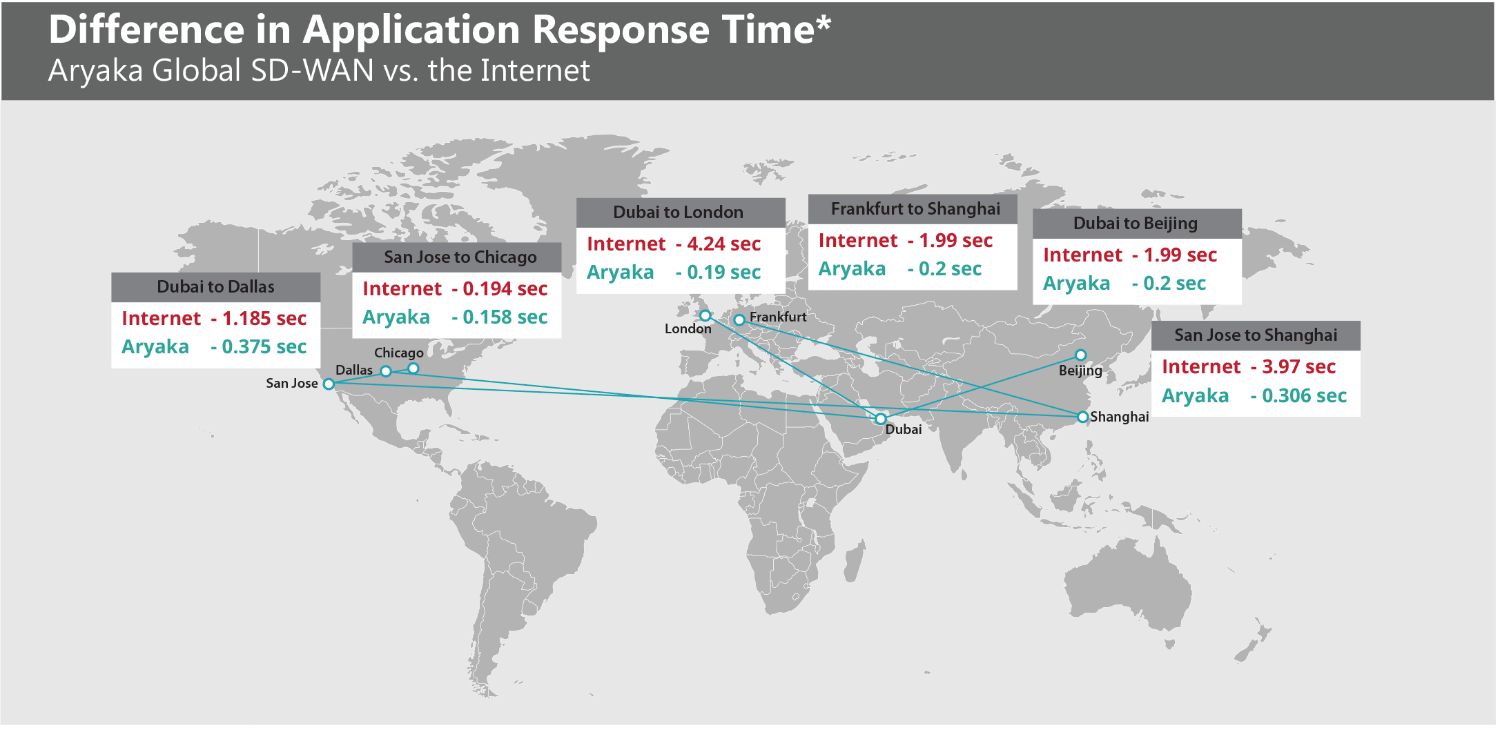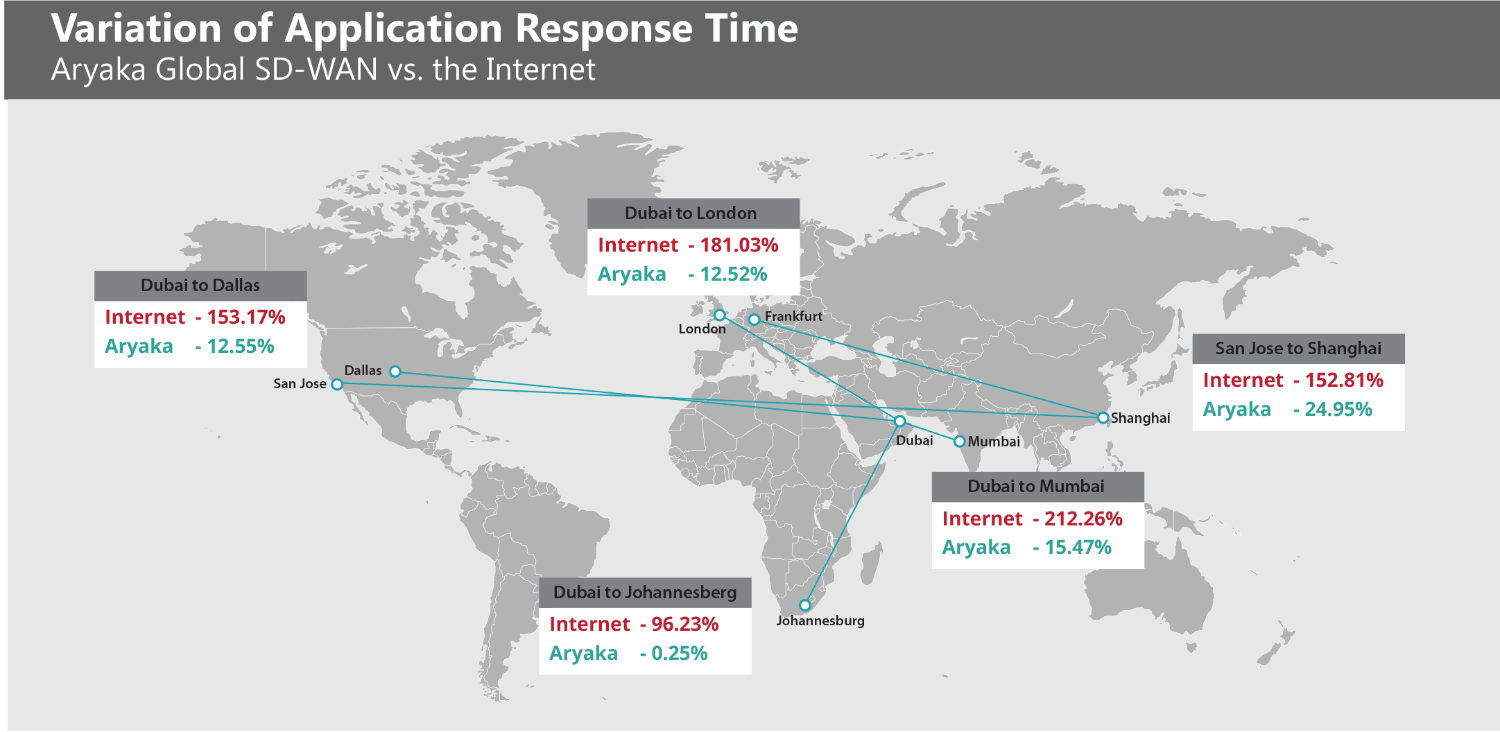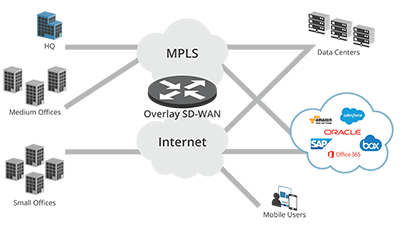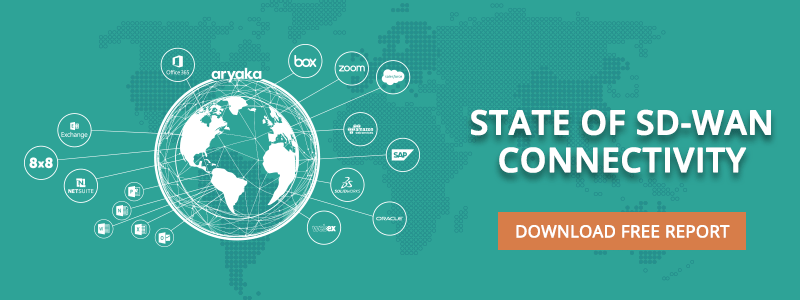Five Things to Consider When Evaluating SD-WAN Architectures

Enterprises of every size are migrating mission-critical applications to the cloud faster than you can set up an internet connection. As this shift in application hosting and delivery becomes mainstream, exploration and investment in to SD-WAN solutions for cloud connectivity and network scalability is increasing. However, IT leaders should be careful deploying new SD-WAN solutions that work more as a band-aid than an actual WAN enhancement.
The problem with multiple transports
Many network planners try to design an SD-WAN architecture that incorporates both the Internet and MPLS. Yet, this often leads to poor performance of cloud and SaaS applications since it requires the backhauling of traffic from MPLS, to the data center, through the internet, and back again.
Another approach is to purchase a Direct Connect from individual cloud providers such as Microsoft and AWS. However, only a few carriers (and cloud providers) offer this service in select locations, and connectivity is not likely to be scalable as a business expands.
In addition, when multiple transport services are in the picture, enterprises need to overlay SD-WAN services that will enable controlling, defining, and configuring end-to-end application flows across all of the elements of the hybrid WAN.
Constructing a WAN with this approach becomes an extremely complicated process for IT. In addition, costs can inflate wildly, as more and more hardware, software, and direct connections need to be purchased, maintained and managed to keep the network running.
Based on the recent data and analysis we acquired from the State of SD-WAN Connectivity Report. Here are a few key points we recommend considering when evaluating SD-WAN architectures:
1. Application Performance.
Delays in response time can lead to lost productivity for a business or even lost conversions. These problems are caused by application slowdowns due to network latency across continents and oceans. Below is a chart highlighting the application response times collected in the State of SD-WAN Connectivity Report. Tests were conducted sending a randomly generated 100 KB file from one remote location to another.

*This graph compares the average response time across both networks between the same pairs of locations.
2.Variation in Performance
Variation in network performance and low reliability is also a significant issue. With the Internet, it is impossible to predict the application performance and reliability with certainty since it is a public (shared) medium that is prone to congestion and packet loss, especially as data traverses long distances. Below is a chart highlighting locations which experience the most variation in application performance.


Typical SD-WAN Architecture
3. Complexity
Building a complex WAN infrastructure by combining a private WAN or MPLS lines with lower cost Internet connectivity and overlay SD-WAN is not the most cost-effective approach an enterprise can take. In addition to the cost, such a solution requires both IT and network expertise, as well as a significant outlay of time for maintenance and support.
4. Flexibility
Enterprises must consider how agile and flexible their WAN needs to be to support distributed cloud deployments, market expansion requirements (such as setting up new sites quickly), business initiatives such as M&A, etc. Network resources must be allocated dynamically, quickly, and efficiently across multiple locations and different types of cloud services and providers. Depending on the application requirements, network administrators must be able to add new sites and flexibly increase/decrease bandwidth as needed, without having to wait months or days.
5. Security
Another key consideration when building a WAN for the cloud is security. Sensitive and business-critical data flowing across the network and between different cloud types must remain protected and secure. Therefore, enterprises should adopt a network solution that ensures data confidentiality, integrity, and availability. In many instances, this requires network-based encryption and, in some cases, encryption at multiple layers.
Based on the findings from the State of SD-WAN Connectivity Report, a global enterprise with users spread around the world cannot rely on the Internet or Internet-dependent SD-WAN solutions to deliver a reliable and consistent application delivery experience.
In order to achieve this, here are some of the key attributes we suggest looking for when upgrading your WAN for today’s cloud and SaaS-based applications
- Look for an SD-WAN solution that delivers global connectivity and not just regional connectivity.
- Find an SD-WAN solution that reduces Internet dependency on the long haul middle mile, not one that simply finds an alternate path.
- Understand the differences in regional performance issues and variability for each location. Look for solutions that flatten variability across each of them.
- Look for next-generation SD-WAN solutions that are cost-effective and provide agility (the ability to extend connectivity to new offices within hours vs. weeks or months) as compared to legacy MPLS and WAN Optimization solutions.
Find out what is the right SD-WAN solution for your enterprise. Download the State of SD-WAN Connectivity Report to learn more today.








